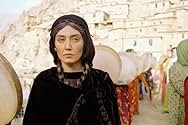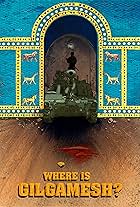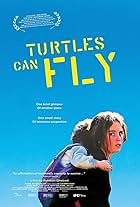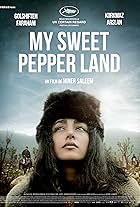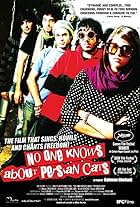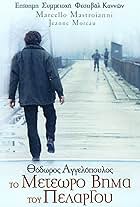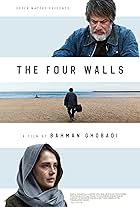Half Moon: (original Kurdish title, Niwe Mang): director, Bahman Ghobadi. Viewed at San Sebastian film festival, 2006.
Thursday, day number eight of the festival, was packed from stem to stern with significant film viewings, three major press conferences, and meetings with colleagues, leaving little time to write about these events in any detail. The day started with the press screening in the main hall of the Kursaal Center of Bahman Ghobadi's new Iranian-Kurdish offering, "Half Moon" (Niwemang). Ghobadi is a favored son here in Donostia where his last film "Turtles Can Fly" copped a unanimous decision for the Best Film Golden Concha two years ago.
The current work, with a lengthy running time of just under two hours, again focuses on the stateless Kurdish community of Iran, and is rich in Kurdish cultural and folkloric material with the usual sparkling, natural performances he invariably draws from his predominantly Kurdish performers, and the huge panoramic landscapes of the barren mountainous Persian terrain which have come to typify his visual style.
"Half Moon" might be characterized as a road movie in which a group of traditional Kurdish musicians consisting of Maestro Mamo and his ten sons, set out in a school bus from Tehran for the border area where Iran abuts against both Turkey and Iraq, hoping to stage a musical event with traditional instruments for their Kurdish bretheren in Iraq — now a possibility thanks to the recent fall of the Saddam Hussein regime.
At the border they run into unpleasant military confrontations with near disastrous results for their treasured project. Mamo, (Ismail Ghaffari) the handsome old man who is the leader of the delegation, is so distraught that he gets into the coffin where the Kurdish instruments have been concealed and asks to be buried alive. At the touchy border crossing they are met by a beautiful mysterious young woman who offers her assistance in getting them past the ominous border guards.
"Half Moon", while dealing with the precarious position of Kurds in this strife torn part of the world, is much lighter in tone than hisu previous "Turtles Can Fly" and is almost a comedy, but with serious political overtones. The beauty at the border is played by Golshifte Farahani, currently Iran's most popular leading lady of the silver screen. With her looks and on screen charisma its not hard to see why.
PHOTO: Golshifte Farahani She reminds me of a cross between Italy's Monica Belluci and Pakistan's former president Benazir Bhutto. With Iran's growing presence on the world film scene I would be willing to bet my bottom Euro that it's only a matter of time before this striking actress is discovered by some Western director and breaks out into an international career. She was present at the press conference and speaks English, so that language would be no hindrance.
At the press conference following the screening director Ghobadi was very relaxed, often smiling, and, though speaking in Farsi through an interpreter, looked every questioner straight in the eye while his interpreter translated into Spanish. This was a tri-lingual press conference as some questions had to wind their way from English through Spanish, then into Farsi — and back again by the same route. Fun! An important question, put to Ghobadi by Steve Ashton of the Napa Valley Wine Country festival in California, was whether or not the film was censored or hampered in any way in Iran. Ghobadi replied that first of all, he received no internal support to make the film in Iran and therefore had to import equipment from Europe (this was an Iran-Iraq-Austra-France co-production) and, when finished, it was banned from screens in Iran. The DOP, incidentally, was a New Zealander, Nigel Bluck. This is the director's fourth feature since his highly acclaimed debut "A Time For Drunken Horses" in 2000. All have been shown at important festivals, Mar del Plata, Cannes, and the last two here in Donostia.
At 37 Bahman Ghobadi would appear to have a long road ahead of himself and is clearly a name to remember.







